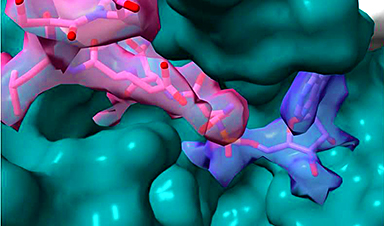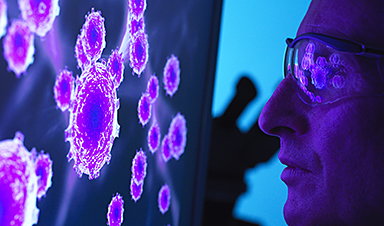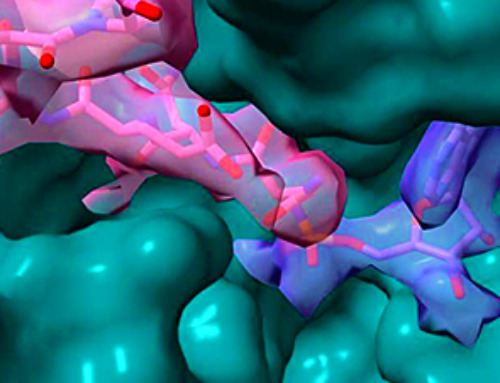Research indicates hospitals contribute to the local spread of antibiotic-resistant infections.
A recent study published in the journal Infection Control & Hospital Epidemiology by the Society for Healthcare Epidemiology of America suggests that family members of patients discharged from hospitals may be at an increased risk of contracting antibiotic-resistant infections, commonly referred to as superbugs. This risk persists even if the patient themselves was not diagnosed with such an infection, indicating that hospitals may contribute to the spread of resistant bacteria in the community.
When recently hospitalized patients were diagnosed with the superbug — Methicillin-resistant Staphylococcus aureus infection (MRSA) — the risk to relatives living with them was even higher. The longer the relative’s hospital stay, even without a MRSA diagnosis, the higher the risk to family members.
“Patients can become colonized with MRSA during their hospital stay and transmit MRSA to their household members,” said Aaron Miller, PhD, lead researcher on the study and research assistant professor of internal medicine-infectious diseases at the University of Iowa. “This suggests hospitals contribute to the spread of MRSA into the community through discharged patients who are asymptomatic carriers.”
Recommendations for Hospitals
Miller recommends hospitals enhance infection control practices, including testing for MRSA colonization, especially at discharge, even with there are no symptoms of infection. He said MRSA colonization and infections could be tracked among hospital patients and their household contacts to identify and mitigate transmission more effectively.
“This important study illustrates the risk of spread of resistant pathogens related to healthcare and highlights the essential importance of core infection practices,” said SHEA President Thomas Talbot, M.D., chief hospital epidemiologist at Vanderbilt University Medical center. Talbot was not involved with the research. “Hand hygiene, environmental cleaning, and standard interventions to reduce Staphylococcal colonization are crucial to preventing the spread of resistant bacteria in healthcare settings.”
Understanding MRSA
MRSA infections are known as superbugs because they do not respond to common antibiotics, making them difficult to treat. MRSA generally occurs in people who have been in a hospital or another healthcare setting, such as a nursing home, but MRSA also spreads in communities outside the hospital, usually through skin-to-skin contact. Most people with MRSA have no symptoms, but the bacteria can cause painful swelling if it gets under the skin, and it can be deadly if it spreads to other parts of the body, such as blood or lungs.
Researchers used a large database of insurance claims that included 158 million enrollees with two or more family members on the same plan to learn about how MRSA spread after someone in a household had been in the hospital.
Reviewing 424,512 MRSA cases among 343,524 insured people, the study found 4,724 cases of MRSA being potentially transmitted to a family member from a relative who had recently been in the hospital and had a diagnosis of MRSA. They also found 8,064 potential transmissions of MRSA after the hospitalization of a family member who did not have an MRSA infection.
“It is important not to over-emphasize the hospital stay risk,” Miller said. “While we identified a significant risk factor for transmission in the household and community the absolute risk remains relatively low.”
People exposed to a recently hospitalized family member with MRSA were more than 71 times, or 7000%, more likely to get an MRSA infection compared to enrollees who did not have a family member who had been hospitalized or exposed to MRSA in the previous 30 days.
Having a family member in the household who was hospitalized but did not have MRSA increased the chances of a relative getting MRSA in the month after discharge by 44%.
The more time the family member spent in the hospital, the higher the likelihood that someone in their household would get MRSA. If the patient was in the hospital for one to three days in the previous month, the chance of a relative getting MRSA increased by 34% compared to people with no recent hospitalizations in their household. If a family member was hospitalized for four to 10 days, the chances of MRSA infection in a relative were 49% higher, and with hospitalizations longer than 10 days the odds of a relative in the same household getting an infection rose by 70% to 80%.
Other factors associated with MRSA infections among household members included the number of other illnesses, prior antibiotic usage, and the presence of young children in the family.
Reference: “Hospitalizations among family members increase the risk of MRSA infection in a household” by Aaron C. Miller, Alan T. Arakkal, Daniel K. Sewell, Alberto M. Segre, Bijaya Adhikari, Philip M. Polgreen and For The CDC MInD-Healthcare Group, 7 August 2024, Infection Control & Hospital Epidemiology.
DOI: 10.1017/ice.2024.106
News
Nano-Enhanced Hydrogel Strategies for Cartilage Repair
A recent article in Engineering describes the development of a protein-based nanocomposite hydrogel designed to deliver two therapeutic agents—dexamethasone (Dex) and kartogenin (KGN)—to support cartilage repair. The hydrogel is engineered to modulate immune responses and promote [...]
New Cancer Drug Blocks Tumors Without Debilitating Side Effects
A new drug targets RAS-PI3Kα pathways without harmful side effects. It was developed using high-performance computing and AI. A new cancer drug candidate, developed through a collaboration between Lawrence Livermore National Laboratory (LLNL), BridgeBio Oncology [...]
Scientists Are Pretty Close to Replicating the First Thing That Ever Lived
For 400 million years, a leading hypothesis claims, Earth was an “RNA World,” meaning that life must’ve first replicated from RNA before the arrival of proteins and DNA. Unfortunately, scientists have failed to find [...]
Why ‘Peniaphobia’ Is Exploding Among Young People (And Why We Should Be Concerned)
An insidious illness is taking hold among a growing proportion of young people. Little known to the general public, peniaphobia—the fear of becoming poor—is gaining ground among teens and young adults. Discover the causes [...]
Team finds flawed data in recent study relevant to coronavirus antiviral development
The COVID pandemic illustrated how urgently we need antiviral medications capable of treating coronavirus infections. To aid this effort, researchers quickly homed in on part of SARS-CoV-2's molecular structure known as the NiRAN domain—an [...]
Drug-Coated Neural Implants Reduce Immune Rejection
Summary: A new study shows that coating neural prosthetic implants with the anti-inflammatory drug dexamethasone helps reduce the body’s immune response and scar tissue formation. This strategy enhances the long-term performance and stability of electrodes [...]
Scientists discover cancer-fighting bacteria that ‘soak up’ forever chemicals in the body
A family of healthy bacteria may help 'soak up' toxic forever chemicals in the body, warding off their cancerous effects. Forever chemicals, also known as PFAS (per- and polyfluoroalkyl substances), are toxic chemicals that [...]
Johns Hopkins Researchers Uncover a New Way To Kill Cancer Cells
A new study reveals that blocking ribosomal RNA production rewires cancer cell behavior and could help treat genetically unstable tumors. Researchers at the Johns Hopkins Kimmel Cancer Center and the Department of Radiation Oncology and Molecular [...]
AI matches doctors in mapping lung tumors for radiation therapy
In radiation therapy, precision can save lives. Oncologists must carefully map the size and location of a tumor before delivering high-dose radiation to destroy cancer cells while sparing healthy tissue. But this process, called [...]
Scientists Finally “See” Key Protein That Controls Inflammation
Researchers used advanced microscopy to uncover important protein structures. For the first time, two important protein structures in the human body are being visualized, thanks in part to cutting-edge technology at the University of [...]
AI tool detects 9 types of dementia from a single brain scan
Mayo Clinic researchers have developed a new artificial intelligence (AI) tool that helps clinicians identify brain activity patterns linked to nine types of dementia, including Alzheimer's disease, using a single, widely available scan—a transformative [...]
Is plastic packaging putting more than just food on your plate?
New research reveals that common food packaging and utensils can shed microscopic plastics into our food, prompting urgent calls for stricter testing and updated regulations to protect public health. Beyond microplastics: The analysis intentionally [...]
Aging Spreads Through the Bloodstream
Summary: New research reveals that aging isn’t just a local cellular process—it can spread throughout the body via the bloodstream. A redox-sensitive protein called ReHMGB1, secreted by senescent cells, was found to trigger aging features [...]
AI and nanomedicine find rare biomarkers for prostrate cancer and atherosclerosis
Imagine a stadium packed with 75,000 fans, all wearing green and white jerseys—except one person in a solid green shirt. Finding that person would be tough. That's how hard it is for scientists to [...]
Are Pesticides Breeding the Next Pandemic? Experts Warn of Fungal Superbugs
Fungicides used in agriculture have been linked to an increase in resistance to antifungal drugs in both humans and animals. Fungal infections are on the rise, and two UC Davis infectious disease experts, Dr. George Thompson [...]
Scientists Crack the 500-Million-Year-Old Code That Controls Your Immune System
A collaborative team from Penn Medicine and Penn Engineering has uncovered the mathematical principles behind a 500-million-year-old protein network that determines whether foreign materials are recognized as friend or foe. How does your body [...]





















